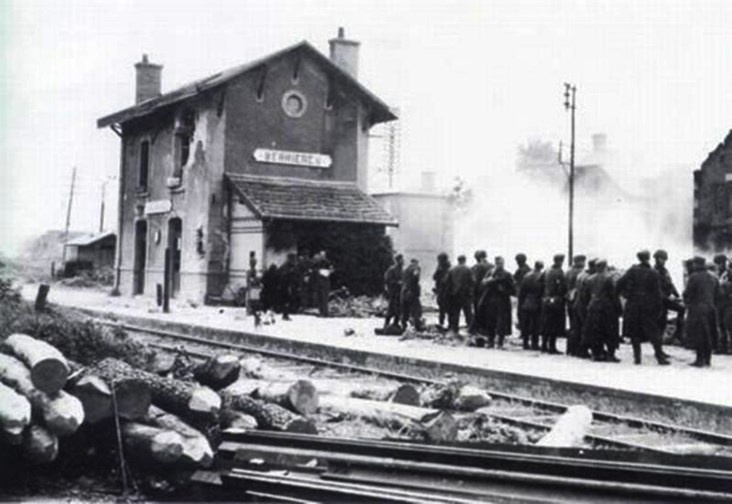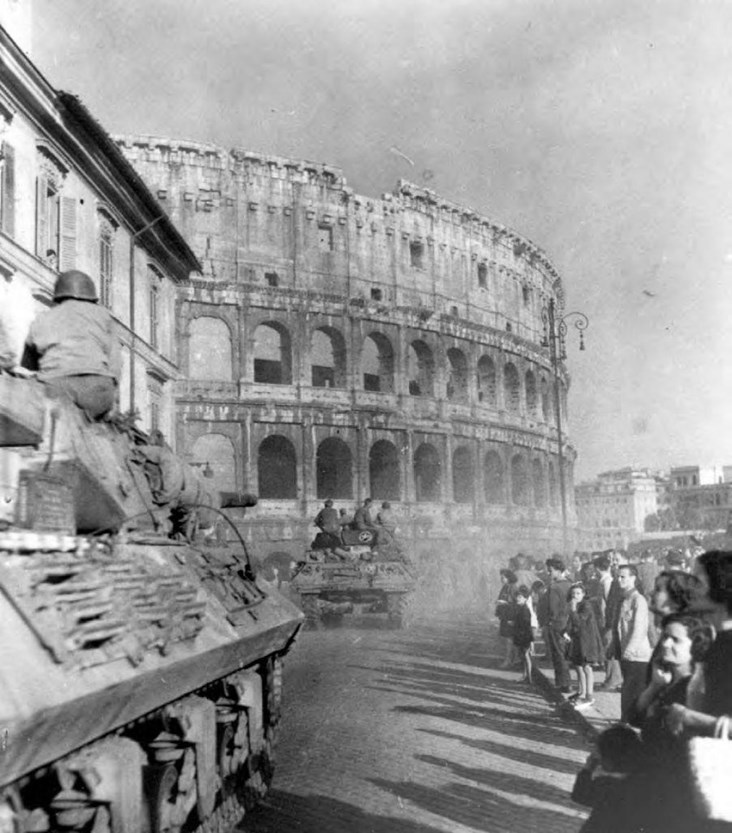We Have Won Battle of the Beaches - Montgomery
From a talk by Gen. Montgomery to War Correspondents in Normandy, June 12, 1944.
The War Illustrated, Volume 8, No. 184, Page 117, July 7, 1944.
The situation today is that these landings that we have made on the coast of Normandy have all been joined up into a solid line – a continuous lodgement area from right to left.
The violence and the power and the speed of our initial assault carries us right over the beaches and some miles inland very quickly, except in one special case. On these beaches there were concrete defences and in a great many cases they were passed with enemy garrisons remaining in them.
I said beforehand that every man must be imbued with one idea and that was to penetrate quickly and deeply into enemy country and peg out claims inland. The conception that you land on the beaches and get a little bridgehead, then dig in – that is no good. You must penetrate quickly and deeply. Those defended localities which still held out when we were three miles inland had to be dealt with and reduced later. In that process we had losses because they were held by stout-hearted Germans who fought very well indeed in their concrete-built boxes.
On the beach where the landing of American troops took place east of the Carentan estuary, they found a German field division which had been brought up from behind to thicken the coastal crust and was in process of carrying out an exercise. Very heavy fighting went on on the American beach on D-Day, swaying back and forwards, and by the evening the leading troops were not more than 100 yards inland, hanging on by their eyelids... Today those troops are miles inland.
The situation was retrieved by three things – (1) the gallantry of the American soldiers; (2) by the very fine supporting fire given from sea by the Allied Navy; and (3) by the very good fighter-bombers, who came down low to shoot up the Germans at close range. I should think that the retrieving of that situation from a very difficult and unpleasant situation to a very good one is probably one of the finest things that has been done in this operation.
The Western Canadian Infantry Brigade, which in part of the British Third Division, has been in the thick of the fighting since the first day. The brigade landed on the beaches, went right away to its objective inland and still stands there.
The support give to our armies by the Navy and Air Force has been superb – without it we could not have done it. The heavy bombing of the Fortresses and the other bombers was one of the big factors which made our getting on shore so quickly really possible. Our soldiers – American and British – have already got the measure of the enemy.
Index
Previous article
Canadians Contribute to the Haul of Prisoners
Canadians Contribute to the Haul of Prisoners In six days from the landing prisoners numbered 10,000. This wayside station in Normandy (top) was a German strongpoint. It is now in Canadian han
Next article
As Allies Reach the End of the Road to Rome
Armour of the 5th Army rolls past the ancient Colosseum in Rome, which our triumphant troops occupied on the night of June 4, 1944, while cheering Italians line the pavement. Before the liberators,




